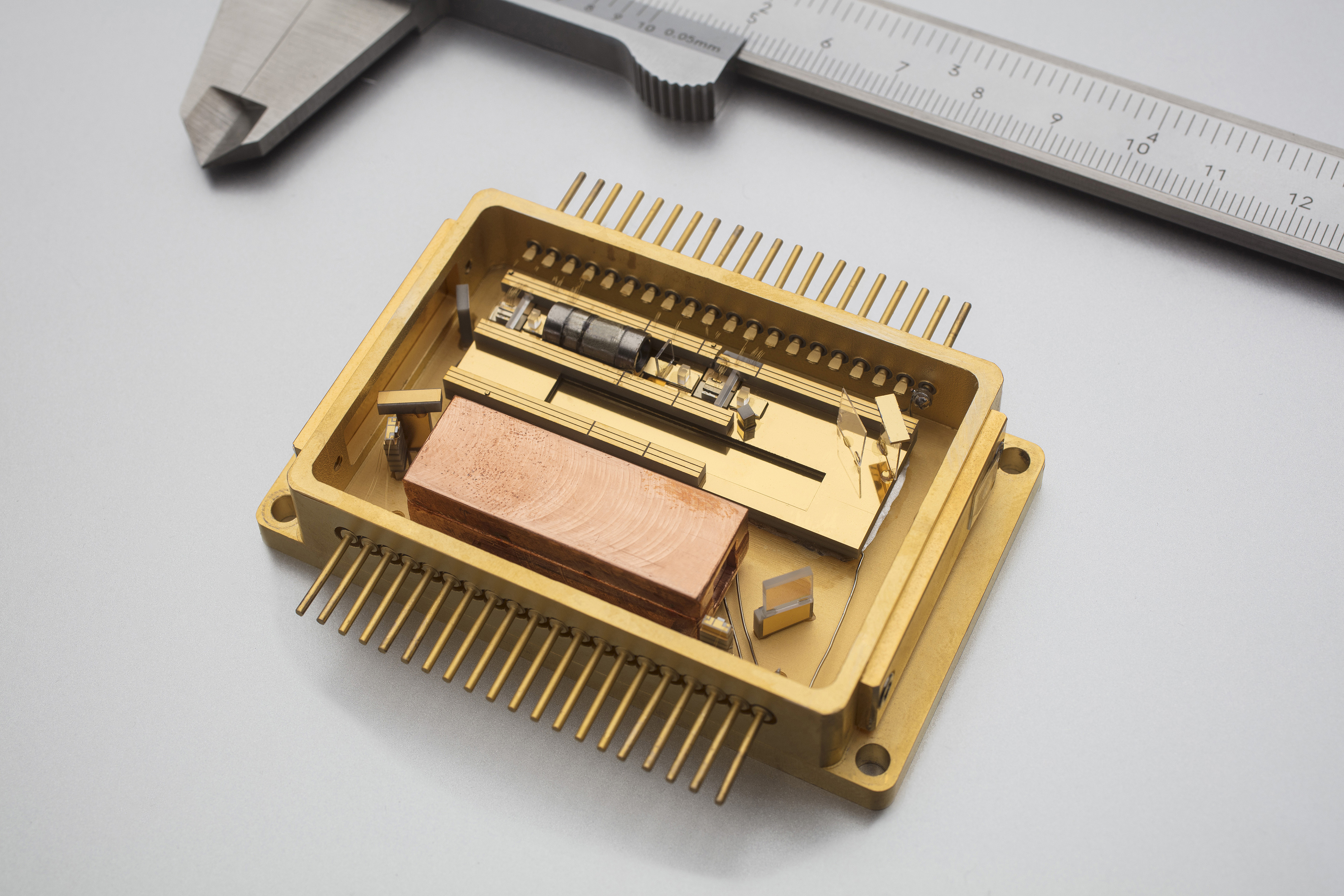FBH presents diode lasers and UV LED developments at Photonics West

Ferdinand-Braun-Institute (FBH) presents its capability in diode lasers and UV LEDs at the Photonics West 2018 trade show and the accompanying conferences. All devices are optimized to fit the respective application; developments range from chips to ready-to-use systems.
The Ferdinand-Braun-Institut (FBH) presents novel developments and advancements of its diode lasers and UV light-emitting diodes (LEDs) at Photonics West 2018.
At the German Pavilion, FBH will showcase its full range of capabilities, offering the full value chain in-house: from design through chips to modules. The institute increasingly advances these devices up to the operational system.
Exhibits include:
High-power pulse laser source for LiDAR systems
Lasers generating short optical pulses with widths in the range from 200 ps to 20 ns are key components for a broad range of applications including LiDAR (Light Detection and Ranging), for autonomous driving, 3D object detection, laser scanning (airborne, satellite, and terrestrial) as well as fluorescence spectroscopy and micro-machining systems. The laser module uses a tailored design for pulse generation from the institute's diode laser technology as well as a laser driver with GaN transistor in the final stage offering pulses up to 250 A with controllable pulse amplitude and width. Integrated on these drivers is FBH's latest generation of wavelength-stabilized laser diodes that emit 5 ns pulses with 40 W (single emitter) or up to 100 W (3-emitter array) pulse power near 905 nm with good beam quality and up to 85°C. This concept can be transferred to further wavelengths.
Compact laser module offering outstanding frequency stabilization for interferometry
FBH has developed a very compact laser module with emission at 633 nm. The semiconductor laser module, sized only 76x54x15 mm³, uses a novel butterfly-type housing and aims at replacing bulky HeNe lasers. It offers a flexible platform for the integration of a wide range of photonic components, as a means of simplifying adaptation for different application scenarios. This particular module features an all-semiconductor master-oscillator power-amplifier (MOPA) combined with an iodine gas cell to stabilize output power as well as emission wavelength. The MOPA uses newly developed chips, achieving an optical output power of more than 30 mW. A miniaturized optical isolator, purpose-built for the wavelength of 633 nm, is interposed between MO and PA. It features optical isolation of more than 30 dB and a transmission loss of less than 3 dB. The iodine gas cell is also miniaturized, offering a length of only 30 mm and a clear aperture of 2 mm. The frequency of the module's emission could be stabilized by the project partner Toptica to be absolute within a 10 MHz band over a time period of one hour. This corresponds to a frequency stability of 2·10-8, which translates to an accuracy of about 2 microns on a length scale of 100 m. Such accuracy could previously only be reached by large-sized HeNe lasers. The new laser modules will allow a significantly higher degree of miniaturization of interferometric measurement systems in the near future.
Wavelength-stabilized high-brightness light sources
The Ferdinand-Braun-Institut develops customized wavelength-stabilized high-power diode lasers with laser emission in the spectral range between 630 nm and 1180 nm for spectroscopic applications and as pump sources for non-linear frequency conversion. Developments include monolithic dual-wavelength DBR diode lasers with optical output powers up to 200 mW providing two emission lines with a small spectral linewidth for Shifted Excitation Raman Difference Spectroscopy (SERDS). With SERDS, Raman signals can be extracted efficiently and rapidly from disturbing backgrounds such as fluorescence and ambient light, thus improving Raman spectroscopy in real-world applications. DBR tapered lasers and MOPA systems show diffraction limited output powers up to 10 W and are used for efficient second harmonic generation of the emission into the visible spectral range and up-conversion of mid-infrared radiation via sum frequency generation to the near-infrared range.


































